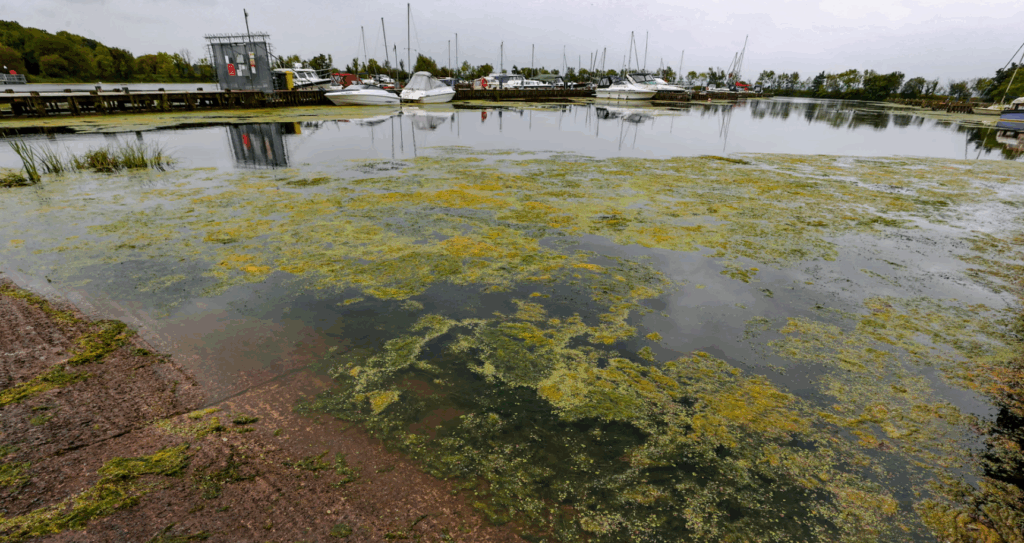- BY Kevin Barry BSc(Hons) MRICS
- POSTED IN Latest News
- WITH 0 COMMENTS
- PERMALINK
- STANDARD POST TYPE


Building a World-Class Environmental Regulator for NI — Score: 9/10 (Oct 2025)
Northern Ireland needs an independent environmental regulator for a simple reason: rules only work when someone trusted enforces them fairly. Today, problems like sewage spills, illegal dumping, polluted rivers and damaged habitats can fall between departments, take too long to fix, or leave the public unsure who is in charge. A stand-alone regulator would be separate from day-to-day politics and focused on one job—protecting our air, land and water—by setting clear standards, inspecting sites, acting quickly when things go wrong, and publishing the results so everyone can see what’s being done. That clarity builds confidence for residents, farmers and businesses alike: they know the rules, they know they’re applied consistently, and they can see that bad actors face real consequences while good practice is supported.
On review of the Independent Panel’s Final Report (Oct 2025) and DAERA’s launch note, below is a reconciliation against worldwide best practice (OECD regulator governance, UK/EU post-Brexit environmental governance norms, Aarhus-style transparency), followed by marks out of 10 for each of the 32 recommendations with one-line rationale.
Snapshot: how the report stacks up to global best practice
- Arm’s-length independence & role clarity — The move to an independent NDPB with a hard split of policy (DAERA) vs. regulation (new body) mirrors OECD guidance (“separate policy-setting from rule-enforcement”; role clarity), and the Defra family reforms direction. Strong alignment.
- Outcome focus — Tying the regulator’s mission to measurable environmental outcomes and the NI Environmental Improvement Plan (once target-driven) matches performance-oriented models used by EPA (IE), SEPA, NRW.
- Enforcement toolbox — Expanding civil sanctions, harmonising fines, exiting SORPI for NI Water, and requiring a published enforcement strategy pull NI toward the “full tools + transparent strategy” norm seen in EA/SEPA/NRW.
- Transparency & accountability — Stand-alone website/comms, proactive open data, MoUs for data-sharing, and an Assembly Environmental Audit Committee echo Aarhus principles and UK parliamentary scrutiny practice.
- Scope coherence — One regulator covering air, water, waste, nature, marine, while moving country parks/direct site management out to avoid conflict: consistent with conflict-of-interest avoidance and systems thinking.
- Funding & independence safeguards — Baking protections into enabling law (modeled on UK Environment Act 2021 / Scottish Continuity Act / NI Climate Act) follows the global lesson that independence can erode without statutory buttressing.
Also notable: Ministerial acceptance of the core recommendation to establish the independent regulator as an NDPB—a key feasibility signal.
Marks out of 10 (with one-line rationale)
Theme 1 — Clarity & coherence
- Publish a “who does what” governance map — 9/10: High-impact, low-cost clarity tool; standard in mature regimes.
- Single, current list of NI environmental law (incl. commencement) — 9/10: Directly addresses legal opacity; aligns with good regulatory hygiene.
- MoUs with NI/GB/ROI regulators — 8/10: Facilitates consistency and cross-border problems (waste, water); execution quality is key.
- Statutory duty to co-operate for all public authorities — 9/10: Powerful enabler of info-flows and joint action; common best practice.
- Appoint lead Dept/lead regulator on overlap cases — 8/10: Mirrors “lead regulator” models; governance frictions will need careful rules.
Theme 2 — Meaningful independence
6) Create an independent NDPB (DAERA sponsor) — 9/10: Correct balance for NI scale; international norm; execution must guard against drift.
7) Broad functional scope (air, water, waste, nature, marine) — 8/10: Systems-based scope is right; keep focus tight on core regulatory functions.
8) DAERA makes policy; regulator regulates/advises — 10/10: Gold-standard separation; reduces conflicts and rebuilds trust.
9) Audit current functions & remove overlaps — 9/10: Essential for clean handover; aligns with OECD “role clarity”.
10) Move Country Parks out of the regulator — 8/10: Avoids role conflict; depends on full-cost transfer/clear stewardship model.
11) Stop direct management of protected sites — 9/10: Strong conflict-of-interest fix; widely used via third-party managers.
12) Mission aligned to measurable outcomes/EIP — 9/10: Outcome-based governance; contingent on upgrading EIP targets.
13) Independent HR/recruitment; fill specialist gaps — 9/10: Key capacity fix; mirrors high-performing regulators’ autonomy.
14) Skill-diverse Board via public appointments — 9/10: Governance best practice; ensure credible, arm’s-length selection.
15) Advisory Committee (civic/sectoral voices) — 8/10: Improves legitimacy and intel; keep advisory vs. decision lines clear.
16) Statutory protection of independence & funding — 10/10: Vital lesson from England/Scotland to prevent attrition of autonomy.
17) Enabling Act to codify roles & relationships — 9/10: Hard-wires role clarity, reporting and sponsor-department boundaries.
Theme 3 — Better compliance
18) Partnerships for guidance/education/training — 8/10: Aligns with modern “enable then enforce” approach; measure uptake.
19) Build local technical pipeline (HE/CAFRE, internships) — 8/10: Attacks structural skills shortage; long-term payoff.
20) Regulator feeds frontline insight into policy — 9/10: Feedback loop improves practical policy; standard in mature systems.
21) Resource the statutory consultee function (planning→appeals) — 9/10: Early-stage influence reduces harm; proven leverage point.
22) Publish independent enforcement strategy + annual reports — 10/10: Core transparency & deterrence lever; matches EA/SEPA practice.
23) Harmonise & raise fines (esp. water), parity with Loughs Agency — 9/10: Ends “crime pays” gap; fairness across regimes.
24) Commence un-enacted Better Regulation Act 2016 powers — 9/10: “Unlock the toolbox” now; fast-path improvement.
25) Exit SORPI with NI Water — 9/10: Restores regulatory edge and credible investment signals; aligns with best practice.
26) Use/add civil sanctions & third-party undertakings — 10/10: Modern, proportionate tools that work across GB/IE regulators.
27) Lay statutory nature-recovery targets — 9/10: Fills NI gap vs. GB/IE; anchors accountability for biodiversity outcomes.
Theme 4 — Transparency & accountability
28) Own website/comms separate from DAERA — 9/10: Independence in practice; clearer identity for public and duty-holders.
29) Default to proactive publication & accessible “living map” data — 9/10: Aarhus-conform transparency; reduces FOI/EIR load.
30) MoUs / legislation for inter-regulator info-sharing — 9/10: Multiplier on scarce “boots on ground”; standard joint-ops enabler.
31) Power to publish consultation responses — 8/10: Reinforces independence and public trust; watch Cabinet clearance norms.
32) Establish Assembly Environmental Audit Committee — 9/10: Elevates cross-government scrutiny; strong UK-style accountability.
Overall verdict
This package is remarkably well-aligned with international best practice and addresses the chronic NI gaps (independence, tools, transparency, and system coherence).
Execution will matter—especially statutory protections (16, 17), credible enforcement (22–26), and resourcing (13). Overall: 9/10 for the recommendations as a set.
What would make it a 10
- A published draft Bill with firm clauses on independence, funding sufficiency tests, and role clarity
- Laid statutory targets for nature
- A time-bound sanctions & fines package (including SORPI exit date)
- A resourced transition plan that closes vacancy gaps and gives the new body hiring autonomy on Day 1
That’s the margin between an excellent design (9/10) and a locked, world-class implementation (10/10).
